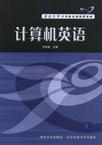计算机英语
2008-9
清华大学出版社有限公司
邱仲潘 编
309
无
打开计算机,即使使用中文版操作系统和汉化软件,仍然可能遇到大量英文内容。如果计算机显示CMOS battery failed(CMOS电池失效),说明CMOS电池的电力已经不足,需要更换新的电池。如果计算机显示Resuming from disk,Press TAB to show POS3、screenl(从硬盘恢复开机,按TAB键显示开机自检画面),则是因为某些主板的BIOS提供了Suspend t0 disk(挂起到硬盘)的功能,当使用者以Suspend to disk的方式来关机时,下次开机就会显示此提示消息。 这是计算机技术资料中常见的例子,不要头疼。计算机技术是从英语国家开始的,从事计算机行业的人,难免遇到大量英文资料,无论是外版教材、技术手册还是联机说明都是如此,而希望阅读或者发表高水平的专业论文,也必须使用英语。因此,学好专业英语对计算机专业学生来说非常重要。 本书是针对计算机专业本科三年级学生编写的。计算机专业学生的基本要求是读懂外方的软件需求文档和在编程中根据要求插入简单的注释文本。因此在本书编写过程中,我们一直认为应该强调阅读理解,强调简单文本写作及强调专业术语与基本科技英语语法。同时,为了提高效率和便于工作中的资料积累与交流,应该介绍一些翻译技巧,使学生能够把看懂的内容用比较准确和流畅的中文表达出来,能够把软件设计与实现中的思路翻译成简单英文。为此,我们挑选一些难句,给出准确翻译并进行剖析,增加学生的理解深度。课文后面还有关键术语的解释、翻译技巧及技术方面、语言方面的知识,非常实用。每章最后还有参考读物,难度略大于课文,建议老师在保证让学生掌握课文内容的前提下,根据学生的接受情况和兴趣、水平决定教学内容的深浅。俗话说,兴趣是成功之母,本教材努力通过各种背景知识增加趣味性,老师还可以通过调动学生积极参与课堂教学活动激发学生的学习兴趣,可以鼓励学生自己从网络和其他地方寻找相关资料,扩大视野,并且把学习的专业英语知识应用到其他专业课程的学习中,学以致用,切实体会计算机英语的作用,变“要我学”为“我要学”。 本书由邱仲潘主编,第l章至第14章由邱仲潘编写,第15章至第20章由刘文红编写,邱仲潘负责全书的统稿工作。在本书的写作过程中,陈锵、邓琳、黄宣达、江松波、杨静、刘文琼、张艺永等同志也做了大量工作,在此深表感谢。由于时间仓促,书中难免存在错误和缺漏之处,期待各位读者不吝赐教,以便今后修订时改正和增补。
本书是为计算机专业本科三年级学生编写的专业英语教材,全书分20章,每章有一篇计算机时文和难句解释,并将文中涉及的关键术语放在练习中,每章最后还有课外阅读。为了帮助学生阅读和翻译科技文献,每章会介绍一些翻译技巧。时文选择既考虑让学生掌握必要的专业词汇,又考虑介绍一些前沿技术,开拓学生的视野。作者作为一线教师,了解学生的知识水平、接受能力和需求点,而且翻译过大量计算机图书,有丰富的翻译经验,翻译技巧的系统介绍是本书的一大特色。
Chapter 1 Personal ComputerChapter 2 Hard DisksChapter 3 MonitorChapter 4 MouseChapter 5 How Bits and Bytes WorkChapter 6 MicrorocessorChapter 7 Application SoftwareChapter 8 CompilerChapter 9 How Java WorksChapter 10 DBMSChapter 11 Artificial IntelligenceChapter 12 Neural NetworkChapter 13 How DSL WorksChapter 14 Internet InfrastuctureChapter 15 How Internet Search Engines WorkChapter 16 EncryptionChapter 17 Taking A Closer Look at the DCEChapter 18 How MP3 Files WorkChapter 19 Shockwave 3-D TechnologyChapter 20 PlayStation 2参考文献
5.Problems 1)Dead pixels A few LCD monitors are produced wim“dead pixels”.Due to the desire for affordablemonitors.most manufacturers sell monitors with dead pixels.Almost all manufacturers haveclauses in their warranties which claim monitors with fewer than some number of dead pixels arenot broken and will not be replaced.The dead pixels are usually stuck with the green,red,and/or blue subpixels either individually always stuck on or off. Like image persistence,this can sometimes be partially or fully reversed by using the samemethod listed below.however the chance of success is far lower than with a“stuck”pixel.It canalso sometimes be repaired by physically flicking the pixel,however it is always a possibility forsomeone to use too much force and rupture the weak screen internals doing this. 2)Stuck pixels LCD monitors,while lacking phosphor screens and thus immune to phosphor burn-in,have a similar condition known as image persistence,where the pixels of the LCD monitor can“remember”a particular color and become“stuck”and unable to change.Unlike phosphor bum-in,however,image persistence can sometimes be reversed partially or completely.This is accomplished by rapidly displaying varying colors to“wake up”the stuck pixels. 3)Phosphor burn-in Phosphor bum-in is localised aging of the phosphor layer of a CRT screen where it hasdisplayed a static bright image for many years.This results in a faint permanent image on the screen.even when powered off.In severe cases it can even be possible to read some of the text,though this only occurs where the displayed text remained the same for years. This was once a common phenomenon in single purpose business computers.It can still be anissue with CRT displays when used to display the same image for years at a time,but modem computers area’t normally used this way any more,so the problem is not a significant issue.Theissue seems to have become exaggerated in popular opinion.The only systems that suffered the defect were ones displaying the same image for years,and with these the presence of bum_in was not a noticeable effect when in use,since it coincided with the displayed image perfectly.It only became a significant issue in 3 situations: ·when some heavily used monitors were reused at home: ·or reused for display purposes; ·in some high security applications(but only those where the high security data displayed did not change for years at a time). Screen savers were developed as a means to avoid bum.in,but are redundant for CRTs today,despite their popularity.‘The problem does not OCCur with multitasking systems,and powering down the display after a period of non-use is as effective and has additional benefits,such as increasing monitor life and reducing power use.

无
质量很好!!!值得一读!
这本书挺不错但要有课文的全文翻译就Perfect了~收到的书有些微破损,不影响阅读外包装没有破损